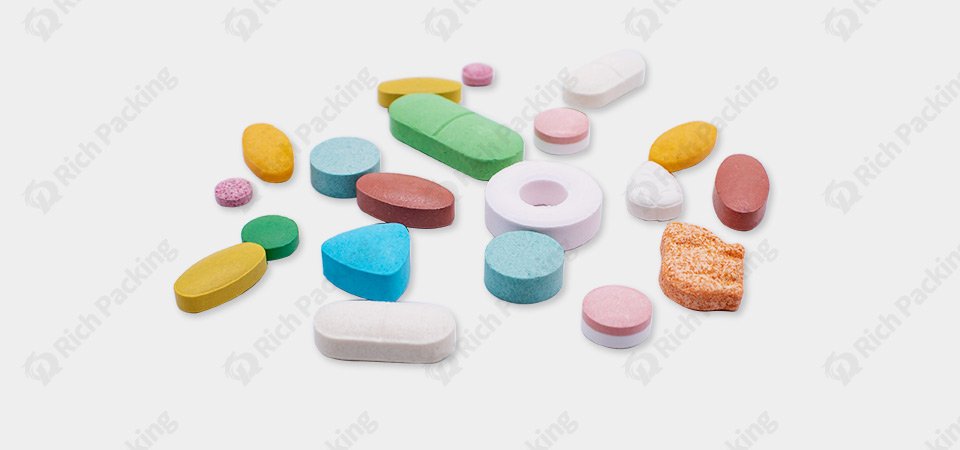Apabila menggunakan a penekan tablet untuk menghasilkan tablet, isu kekerasan tablet boleh memberi kesan ketara kepada kualiti produk, kecekapan pembuatan dan pematuhan peraturan anda. Cabaran ini boleh menyebabkan kelewatan pengeluaran yang mahal, peningkatan sisa dan potensi penarikan balik pasaran. Panduan komprehensif ini akan membantu anda menavigasi kerumitan masalah kekerasan tablet dan menyediakan penyelesaian praktikal untuk mengoptimumkan proses pembuatan anda.

Apabila anda berhadapan dengan kekerasan tablet, anda pada asasnya menguruskan kekuatan mekanikal yang diperlukan untuk tablet anda menahan pengendalian semasa pembungkusan, penghantaran dan penggunaan pengguna. Kekerasan tablet diukur dalam kilopon (kp) atau Newton (N), mewakili daya yang diperlukan untuk memecahkan tablet merentasi diameternya. Kekerasan sasaran anda biasanya berjulat antara 4-10 kp, walaupun ini berbeza-beza berdasarkan spesifikasi produk dan penggunaan yang dimaksudkan.
Kekerasan secara langsung mempengaruhi kerapuhan tablet anda - kecenderungan untuk runtuh atau cip semasa pengendalian. Lebih penting lagi, ia mempengaruhi corak pelepasan dadah dan bioavailabiliti. Terlalu keras, dan tablet anda mungkin tidak hancur dengan betul; terlalu lembut, dan ia tidak akan bertahan dalam proses pembuatan.
Anda akan menghadapi pelbagai masalah kekerasan sepanjang pengeluaran. Kekerasan rendah menjelma sebagai tablet mudah pecah atau pecah. Kekerasan yang berlebihan boleh menyebabkan masa pembubaran yang lebih lama dan bioavailabiliti berkurangan. Kekerasan yang tidak konsisten merentas kelompok mencadangkan kebolehubahan proses yang perlu ditangani.
Faktor berkaitan bahan sering mencetuskan isu ini. Sifat bahan farmaseutikal aktif anda, ciri eksipien dan taburan saiz zarah semuanya memainkan peranan penting. Sebagai contoh, zarah halus biasanya menghasilkan tablet yang lebih keras daripada yang kasar, manakala bahan higroskopik boleh membawa kepada variasi kekerasan dengan perubahan kelembapan.
Faktor berkaitan proses termasuk turun naik daya mampatan, variasi kelajuan dan keadaan peralatan. Faktor persekitaran seperti kelembapan dan suhu boleh memberi kesan ketara kepada sifat tablet anda, semasa pengeluaran dan penyimpanan.
Penyelesaian Pra-Mampatan:
Mulakan dengan formulasi anda. Optimumkan pemilihan dan kepekatan pengikat berdasarkan sifat bahan aktif anda. Pertimbangkan untuk menggunakan selulosa mikrokristalin atau polyvinylpyrrolidone sebagai pengikat - ia terkenal kerana memberikan kekerasan yang sangat baik dengan daya mampatan yang minimum.
Kawal pengedaran saiz zarah anda. Matlamat untuk gabungan dengan sifat aliran yang baik dan kecenderungan pengasingan yang minimum. Pantau kandungan lembapan dengan teliti - ia memberi kesan ketara kepada tingkah laku mampatan. Pertimbangkan untuk melaksanakan analisis kelembapan sebelum pemampatan.
Penyelesaian Proses Mampatan:
Tetapan mampatan anda adalah kritikal. Pantau dan laraskan daya mampatan secara konsisten. Daya yang lebih tinggi secara amnya meningkatkan kekerasan tetapi boleh menyebabkan penutupan atau laminasi. Cari kelajuan mampatan optimum anda - kelajuan yang lebih pantas mungkin memerlukan daya mampatan yang lebih tinggi untuk mencapai kekerasan yang sama.
Beri perhatian kepada perkakas anda. Penyelenggaraan tetap menghalang isu berkaitan haus yang menjejaskan konsistensi kekerasan. Bersihkan dan gilap pukulan dan mati dengan kerap. Pertimbangkan untuk menggunakan alat bersalut krom atau bersalut khas untuk formulasi bermasalah.
Penyelesaian Selepas Pemampatan:
Laksanakan kawalan alam sekitar yang teguh di kawasan pengeluaran dan penyimpanan anda. Kekalkan kelembapan relatif antara 40-60% dan suhu sekitar 20-25°C. Gunakan bahan pembungkusan yang sesuai untuk melindungi tablet anda daripada faktor persekitaran.
Pemantauan Kualiti:
Wujudkan program ujian yang komprehensif. Uji kekerasan pada selang masa yang tetap semasa pengeluaran - biasanya setiap 15-30 minit. Jejaki trend untuk mengenal pasti isu yang berpotensi sebelum ia menjadi masalah yang ketara. Gunakan carta kawalan proses statistik untuk memantau variasi.
Strategi Pelaksanaan:
Membangunkan prosedur operasi standard (SOP) yang jelas untuk kawalan kekerasan. Sertakan parameter khusus, julat yang boleh diterima dan tindakan pembetulan. Latih pengendali anda dengan teliti tentang teknik ujian yang betul dan pengecaman masalah.
Dokumentasikan segala-galanya - daripada spesifikasi bahan mentah kepada kawalan dalam proses dan ujian akhir. Dokumentasi ini terbukti tidak ternilai untuk menyelesaikan masalah dan pematuhan peraturan.
Kawalan Kualiti dan Pengesahan:
Kalibrasi penguji kekerasan anda dengan kerap. Ikuti garis panduan farmakope untuk prosedur ujian. Pertimbangkan untuk melaksanakan sistem ujian automatik untuk hasil yang lebih konsisten.
Mengekalkan rekod terperinci semua data kekerasan. Menganalisis arah aliran secara berkala untuk mengenal pasti penambahbaikan proses yang berpotensi atau isu yang muncul.
Apabila anda menghadapi masalah kekerasan:
1. Periksa daya mampatan anda dahulu - selalunya ia merupakan pembetulan terpantas
2. Sahkan keadaan persekitaran, terutamanya jika masalah muncul secara tiba-tiba
3. Semak perubahan bahan atau pembekal terkini
4. Periksa keadaan dan kebersihan alatan
5. Menilai keseragaman campuran dan sifat aliran
Pertimbangan Masa Depan:
Kekal dimaklumkan tentang teknologi baru muncul dalam ujian dan kawalan kekerasan. Pertimbangkan untuk melaksanakan sistem automatik dengan keupayaan pemantauan masa nyata. Analitis ramalan boleh membantu anda mengenal pasti masalah yang berpotensi sebelum ia berlaku.
Aliran industri menunjukkan tumpuan yang semakin meningkat pada pembuatan berterusan dan ujian keluaran masa nyata. Bersedia untuk perubahan ini dengan menaik taraf sistem anda dan melatih pasukan anda dengan sewajarnya.
Berjaya mengurus kekerasan tablet memerlukan pendekatan sistematik yang menggabungkan formulasi yang betul, kawalan proses yang tepat dan sistem kualiti yang mantap. Dengan melaksanakan strategi yang digariskan dalam panduan ini, anda akan lebih bersedia untuk mencegah dan menyelesaikan isu kekerasan dalam proses pembuatan tablet anda. Ingat bahawa konsistensi dalam pemantauan dan tindak balas cepat terhadap penyelewengan adalah kunci untuk mengekalkan kualiti produk.
Panduan komprehensif ini memberi anda alat dan strategi praktikal untuk menangani masalah kekerasan tablet dengan berkesan. Sama ada anda berhadapan dengan isu semasa atau bersiap sedia untuk menghadapi cabaran masa hadapan, cerapan ini akan membantu mengoptimumkan proses pembuatan tablet anda dan mengekalkan kualiti produk yang konsisten.